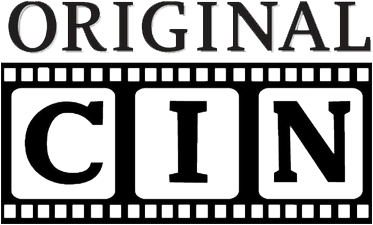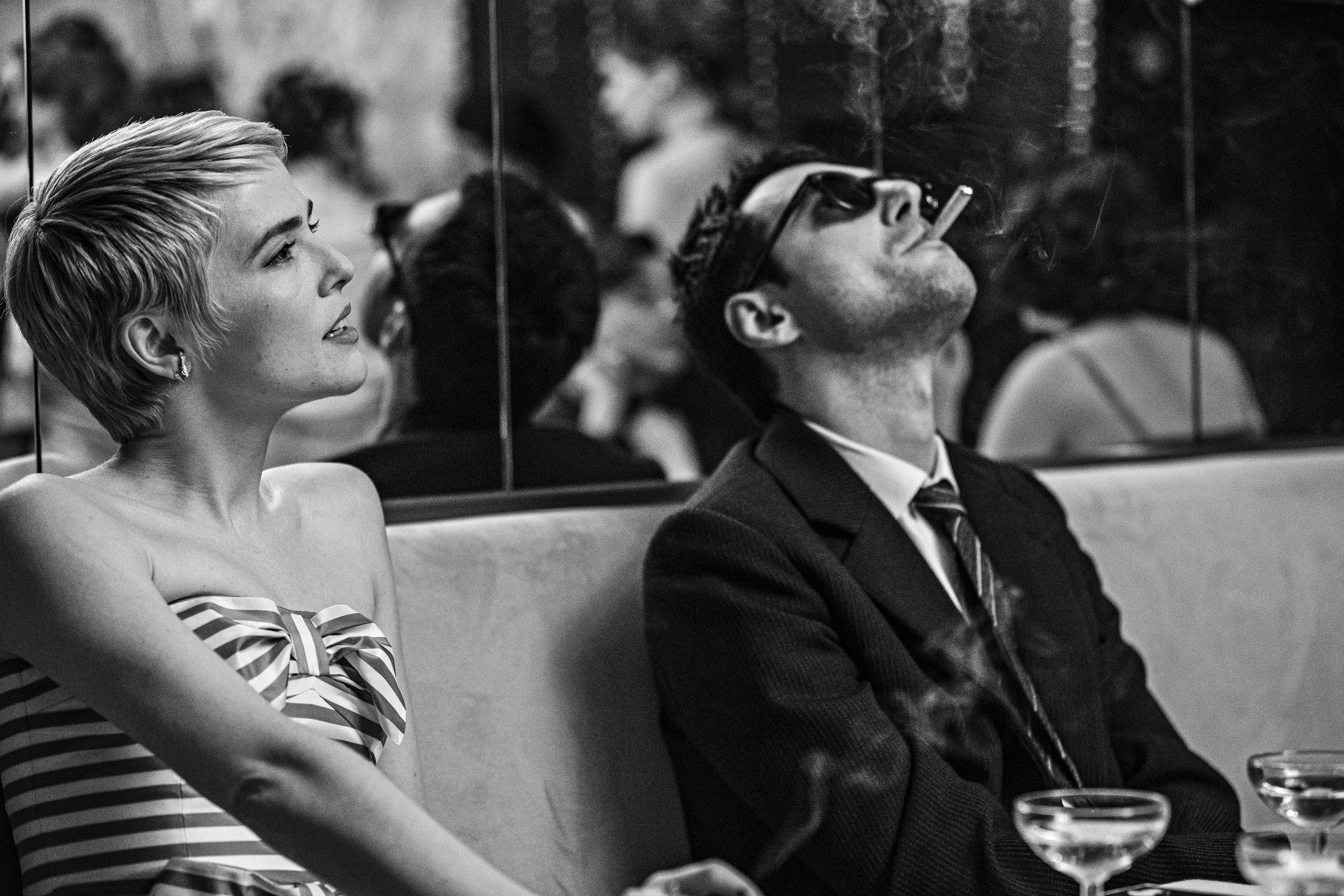Nouvelle Vague: Linklater’s charming, if light, homage to Godard’s Breathless
By Liam Lacey
Rating: A-
Richard Linklater’s two recent films are both period movies about pivotal moments in the lives of popular culture. The indie director’s mid-late career ruminations on the crazy business called show.
Blue Moon, which was released a couple of weeks ago, takes place on the opening night of the game-changing musical, Oklahoma! from the sideline perspective of lyricist, Lorenz Hart (Ethan Hawke), a downward spiraling alcoholic. Blue Moon memorialized while Linklater’s latest, Nouvelle Vague, is a celebration of something being born: The making of Jean-Luc Godard’s landmark debut film, Breathless which, as Pauline Kael, wrote “gave young people the idea that they could make movies on their own, that film could be as personal as a poem or a painting.”
Zoey Deutch and Guillaume Marbeck as Jean Seberg and Jean-Luc Godard
Rather than another behind-the-scenes films about filmmaking, the script, written by Holly Gent and Vincent Palmo Jr., and adapted into French with dialogue by Michèle Pétin and Laetitia Masson, plays like a caper comedy, about a screwball criminal mastermind named Godard.
First, he steals cash from the till of Cahiers du Cinema to pay his way to Cannes to see his colleague Francois Truffaut’s The 400 Blows. He convinces his producer, Georges de Beauregard (Bruno Dreyfürst) to bankroll him for an even bigger heist, using the story of a cop-killing car thief and his American girlfriend to steal the crown of art cinema from his staid forebearers.
Though shot in black and white in an old-fashioned academy ratio with most of the dialogue in French, Linklater’s Nouvelle Vague is easily accessible to a wide audience (Netflix snapped it up in a bidding war after its Cannes debut).
As such, it’s also pretty much everything Godard was not: reverential, rather than critical, linear and smooth, rather than startling and new. Contrary to the original’s guerrilla filmmaking style, Linklater’s film employed a full crew and special effects to recreate the Paris of 65 years ago.
Casting is impressive. Guillaume Marbeck, looks and sounds like Godard, gnomic behind his sunglasses, and already, at 29, speaking in aphorisms (“A filmmaker is either a plagiarist or a revolutionary”), while making decisions based on his own capricious intuitions.
If Jean-Luc feels out of inspiration, he ends shooting after a couple of hours. If there’s a continuity error and he likes the shot, he keeps it in. He writes the script, on the fly, between takes in a café, but the actors say whatever they like to each other because the dialogue was dubbed later. Zoey Deutch as the game but vulnerable American star Jean Seberg, worrying that this is a career ender, is moving and believable. And Aubry Dullin as Jean Paul Belmondo, the former boxer ready to roll with whatever JLG can throw at him, has the same twisted lips and athleticism of the young Belmondo.
Both of Linklater’s films are what I think of as “Whoohoo!” movies, inspired by the 1977 SCTV parody episode, Lust for Paint, a send-up of John Huston’s 1952 biopic of the painter, Henri Toulouse-Lautrec, Moulin Rouge.
In the parody, Dave Thomas and Eugene Levy play Edgar Degas and Claude Monet in a Paris bistro, wave and yelling “Whoohoo!” to various off-screen celebrities, from U.S. president Chester Arthur to Emile Zola. In Blue Moon, the celebrity walk-ons include E.B. White, Stephen Sondheim, and future film director, George Roy Hill. In Nouvelle Vague, Linklater makes it easy to play spot the auteur, introducing the leading cinema lights of the time by putting their name on the screen as they first appear: François Truffaut, Claude Chabrol, Jacques Rivette and Eric Rohmer, with guest appearances by Godard’s filmmaking heroes, Jean-Pierre Melville, Roberto Rossellini, and Robert Bresson, a roll call that feels a tad too cute.
Godard, who died in 2022, made his own film called Nouvelle Vague in 1990, a drama about the shifting power dynamics relationship between a woman industrialist and a drifter who dies and returns as his double, apparently an allegory about film history. After a dismissive review by the New York Times, Godard’s film failed to get North American distribution, though in 2000, the film was picked one of the best of the decade in an international poll conducted by Cinematheque Ontario.
Linklater’s cuddlier Nouvelle Vague, which debuts on Netflix on Nov. 14, is poised to reach a broader audience than any Godard film at least since the late 1960s, the point when his films took a more experimental, political turn. At one point in Linklater’s film, Godard’s producer warns him: “Paying audiences enjoy a formal narrative,” and the statement seems reasonable.
Enjoy Linklater’s version: It’s an affectionate, meticulously constructed look back on a moment in cinema history that takes nothing away from the original masterpiece and may even lead a few souls to it.
Nouvelle Vague. Directed by Richard Linklater. Written by written by Holly Gent and Vincent Palmo, Jr., and adapted into French with dialogue by Michèle Pétin and Laetitia Masson. Starring: Guillaume Marbeck, Zoey Deutch, Aubry Dullin, Bruno Dreyfürst, Benjamin Clery, Matthieu Penchinat and Pauline Belle. In select theatres now and on Netflix U.S. November 14.


